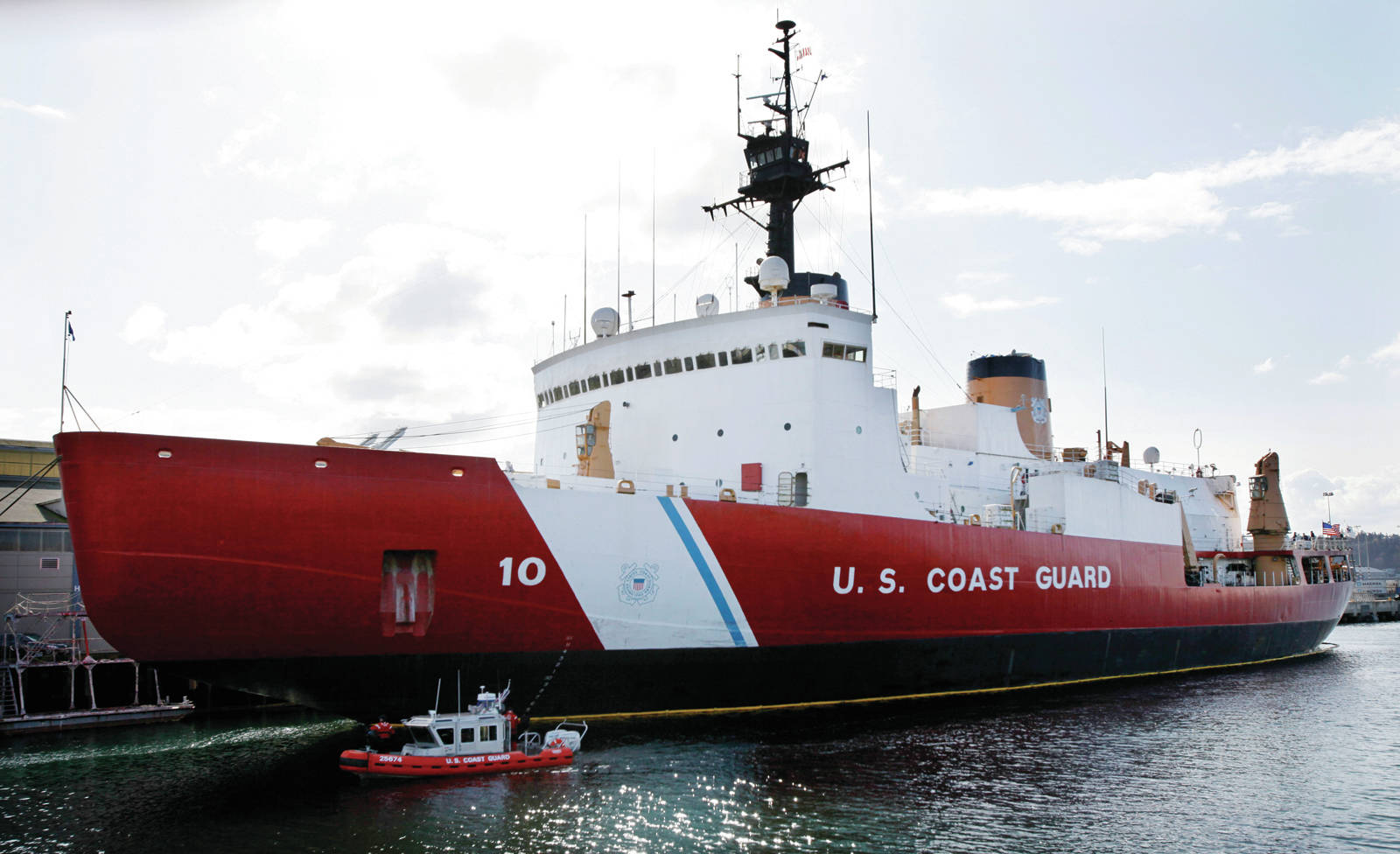U.S. Coast Guard Commandant Adm. Paul Zukunft has one very clear message: the country needs more icebreakers.
Zukunft reiterated that point time and again during an Aug. 24 speech to members of the Alaska policy nonprofit Commonwealth North in Anchorage. He recalled a conversation he had with then-National Security Advisor Susan Rice when Rice asked him what President Barack Obama should highlight shortly before the president’s extended trip to Alaska in late August 2015.
“I said (to Rice) we are an Arctic nation. We have not made the right investments and we do not have the strategic assets to be an Arctic nation and that translates to icebreakers and that’s almost exactly what President Obama said when he came up here,” Zukunft said.
“Fast forward — it’s Jan. 20, 2017, and I’m sitting next to President Trump and as they’re parading by he says, ‘So, you got everything you need?’ I said, ‘I don’t. The last administration, they made a statement but they didn’t show me the money. I need icebreakers.’ (Trump said) ‘How many?’ ‘Six.’ ‘You got it.’
“You never miss an opportunity,” Zukunft quipped.
It’s well documented in Alaska that the U.S. has “one-and-a-half” operable icebreakers. That is, the heavy icebreaker Polar Star and the medium icebreaker Healy, which are in the Coast Guard’s fleet. A sister ship to the Polar Star, the Polar Sea remains inactive after an engine failure in 2010. Zukunft noted Russia’s current fleet of 41 icebreakers to emphasize how far behind he feels the U.S. is in preparing for increased military and commercial activity in the Arctic as sea ice continues to retreat — a message Alaska’s congressional delegation stresses as well.
“We are the only military service that’s truly focused on what’s happening in the Arctic and what happens in the Arctic does not happen in isolation,” Zukunft said.
He added that Russia is on track to deliver two more cruise missile-equipped icebreakers in 2020.
“I’m not real comfortable with them right on our back step coming through the Bering Strait and operating in this domain when we have nothing to counter it with,” he said.
The Coast Guard’s 2017 budget included a $150 million request to fund a new medium icebreaker, which Zukunft characterized as a “down payment” on the vessel expected to cost about $780 million, according to an Aug. 15 Congressional Research Service report on the progress of adding to the country’s icebreaking fleet. For years it was estimated that new heavy icebreakers would cost in the neighborhood of $1 billion each, but those estimates have been revised down as the benefits of lessons learned through construction of the initial vessel and ordering multiple icebreakers from the same shipyard are further examined.
The CRS report now estimates the first heavy icebreaker will cost about $980 million to build, but by the fourth that price tag would go down to about $690 million for an average per-vessel cost of about $790 million. That is on par with the cost for a single new medium icebreaker. Zukunft said the Coast Guard is working with five shipyards on an accelerated timeline to get the first icebreaker by 2023, but how it will be fully funded is still unclear.
“We have great bipartisan support but who is going to write the check?” he said, adding that aside from Russia and China, the United States’ economy is larger than that of the other 18 nations with icebreakers combined.
The Obama administration first proposed a high-level funding plan for new icebreakers in 2013 that has not been advanced outside of small appropriations.
“Our GDP (gross domestic product) is at least five times that of Russia and we’re telling ourselves we can’t afford it,” Zukunft continued. “Now this is just an issue of political will and not having the strategic forbearance to say this is an investment that we must have.”
He also advocated for the U.S. finally signing onto the United Nations Law of the Sea treaty, which lays out the broad ground rules for what nations control off their coasts and how they interact in international waters.
Not signing onto the Law of the Sea, which was opened in 1982, leaves the U.S. little say as other nations further study and potentially exploit the Arctic waters that are opening, he said.
“We are in the same club as Yemen; we are in the Star Wars bar of misfits of countries that have not ratified the Law of the Sea convention,” Zukunft said.
^
Elwood Brehmer can be reached at elwood.brehmer@alaskajournal.com.



